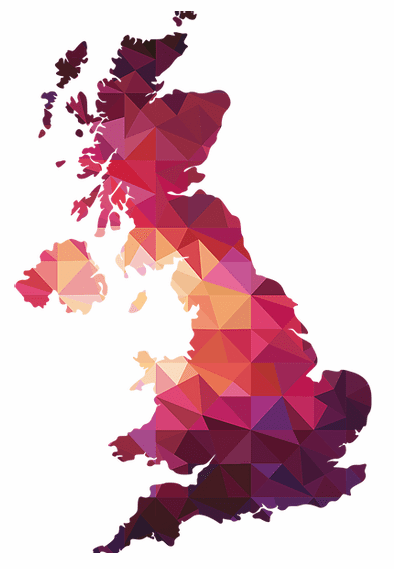Innovative Trials are passionate about ensuring our diverse population is adequately represented within medical research. Whether it is wanting to see more people from underrepresented communities choosing science as a career and pushing for greater patient diversity in clinical trials or focusing on what we are doing internally to celebrate and promote equality and diversity. Throughout 2021, we have made a pledge to share our education and experiences with our clients and colleagues, to ensure inclusivity across the board. Each month we will be releasing communications in line with national and international awareness campaigns. So far in our Awareness series, we have explored: Women’s Health; diversity in Cancer, Heart Disease and Scleroderma; Ovarian and Prostate Cancer; Autism Acceptance; Ramadan and Bowel Cancer; Stroke and Hepatitis; and Mental Health. This month, our colleague, Cecilia Licata will be looking further into Pride Month and diversity within clinical trials and the workplace as part of our June Awareness blog. Innovative Trials has always considered improving diversity in clinical trials as one of the company goals. We not only do that via the clinical studies we support, but also through different initiatives including the Road to Equality in the UK. The importance of diversity and inclusion is immediately clear if we think that, post commercialisation, a treatment will not be used and available only for the very narrow population targeted in clinical trials, but to a way bigger and more diverse public of patients. It is at that point that we see a flaw in the system: more side effects arise, dosages might be too high or too low, and interactions with concomitant therapies occur. The very first question that would arise, at this point, is: Are clinical trials actually inclusive and representative of all communities, including minorities as LBGTQ+ categories? But this question stems from a wider issue: Is there a bias in our healthcare system? And why do LBGTQ+ categories look less likely to receive proper treatment? Despite having the entire month of June designated to educate and sensitise on the disparity of treatment that some people experience, we are still far from having an equal and fair access to healthcare.There are different factors involved: the accessibility to treatment, the stigma associated with being part of the LBGTQ+ community, the lack of education for the healthcare providers in this particular area. [1, 2] Unfortunately, there is a limited literature on the inclusion of LGBTQ+ individuals in clinical trials, even more if intersectionality is taken into account. The lack of focus on minorities has as a main effect their silent exclusion in the patient recruitment process: we see an underrepresentation in clinical trials, with numbers usually in strong favour of white, cisgender and heterosexual individuals. Most protocols also do not seem to take into account eventual interactions with strong hormonal treatments in gender reassignment. On the other hand, the aforementioned issues in accessing healthcare also might play a role in the willingness of LBGTQ+ individuals to participate in clinical trials. The first step would be aiming to tackle the disparities in the healthcare system: an accepting environment, more accessibility to gender identity clinics, the inclusion of additional education for the healthcare providers could be some of the initial steps. Once people are more trusting and aware of being in a safe environment, a more specific discussion on including the LBGTQ+ community on clinical trials options could be started. The aim would be, in this case, to understand while a protocol is being made if there are exclusion criteria that would automatically cut out a portion of the actual population and work to understand the possibility of overcoming these criteria. We at Innovative Trials have been working consistently to improve diversity both in our workplace and in clinical research. We are working on an increasing number of clinical studies aimed at increasing diversity representation and you can read one of our diversity case studies here. Moreover, we have recently rolled out a short and anonymous questionnaire aimed at Innovative Trials employees. We received diverse and heterogeneous responses showing that 12% of the respondents identify as part of the LBGTQ+ community. Of these, 1/3 identifies as Queer, 1/3 as Lesbian, and 1/3 as Pansexual. Furthermore, while 75.7% of our employees has She/Her as preferred pronoun and 21.6% prefers the use of He/Him, 2.7% also uses the gender neutral They/Them. A bigger, systematic effort is needed to achieve a wider LGBTQ+ inclusion in clinical trials, but we can all contribute to this with small changes in our daily activities. As part of our company’s learning, our Equality & Diversity Committee held a Q&A session on workplace diversity, with our Head of HR, Laura Burt. This was an enlightening session, rolled out as a recorded session to the wider company. As a company we were able to increase our knowledge around company policies and how we can ensure inclusivity in the workplace. “Last year we saw a lot of movement around Diversity in the workplace. For us, part of it was about making sure our employees feel supported and that we represent the community” “The Equal Opportunities monitoring form and the health questionnaires we complete when people join us, should be about how we support that employee, and shouldn’t inform decisions around their future with us or their employment. Everyone is individual.” “It’s important that we train our employees. From the off, our new starters complete an online E&D training, and managers go through an additional part of that to support the people in their teams. It’s about recognising specific elements such as unconscious biases, having honest conversations, highlighting it to those people, and taking corrective action” Equality, Diversity and Inclusion continues to be high on our agenda. We are working behind the scenes to push this forward. Keep your eyes peeled for more. Find out how we’re working with clients to ensure greater patient diversity in clinical trials. Pride Month
LGBTQ+ Diversity in Clinical Trials

What could be done to include everyone in clinical research?

Q&A with Laura Burt

Here are a few things that were shared during the session:
References
